
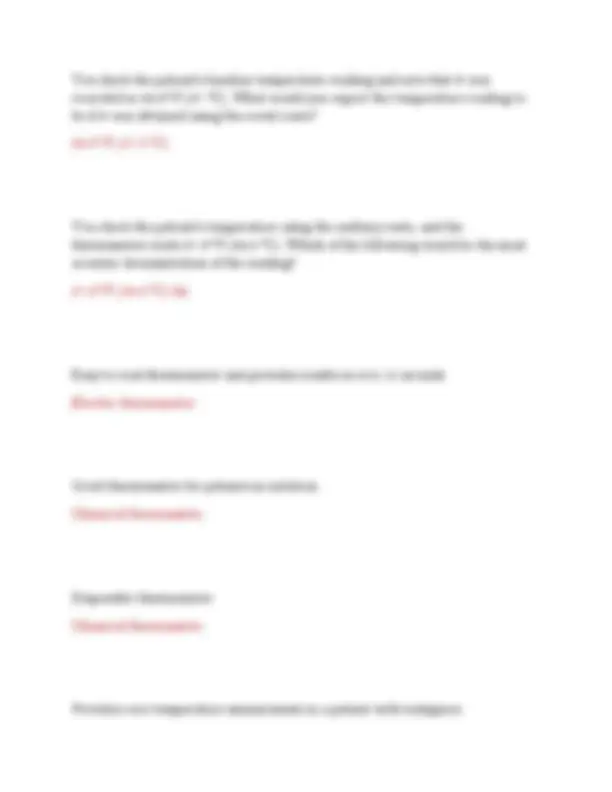

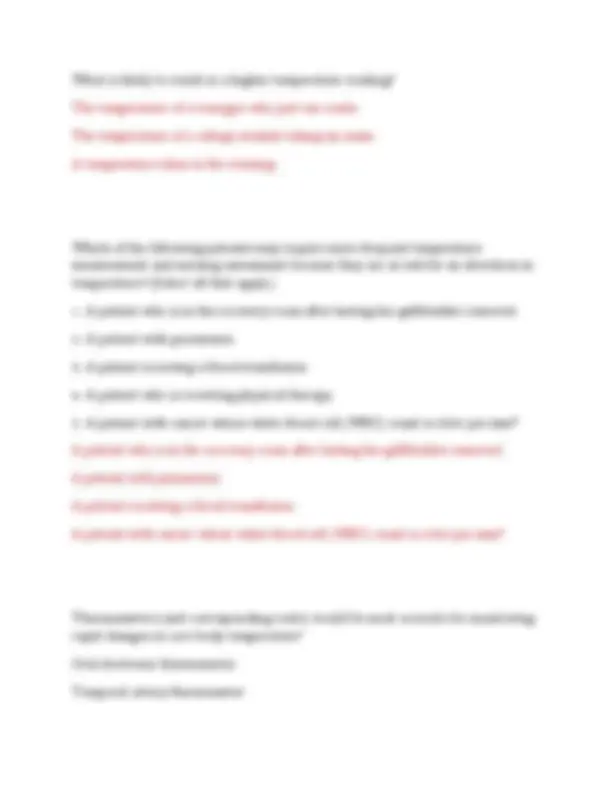
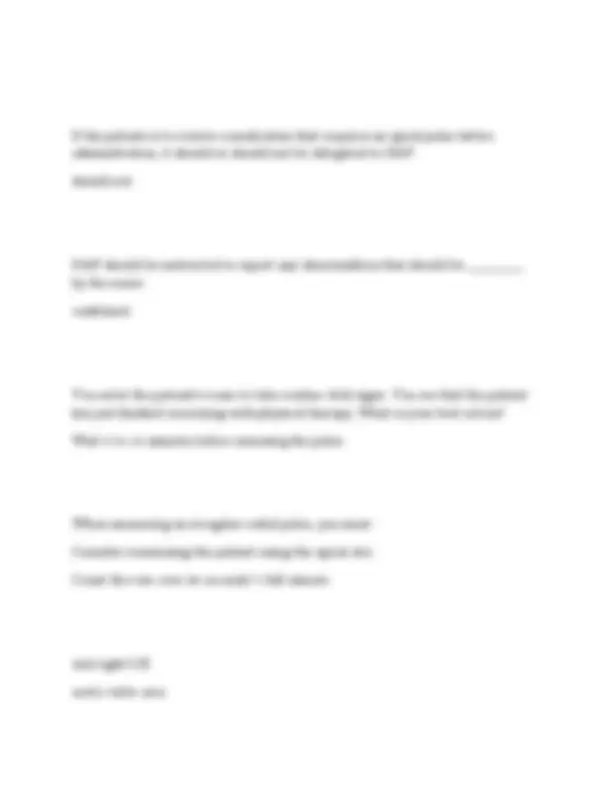
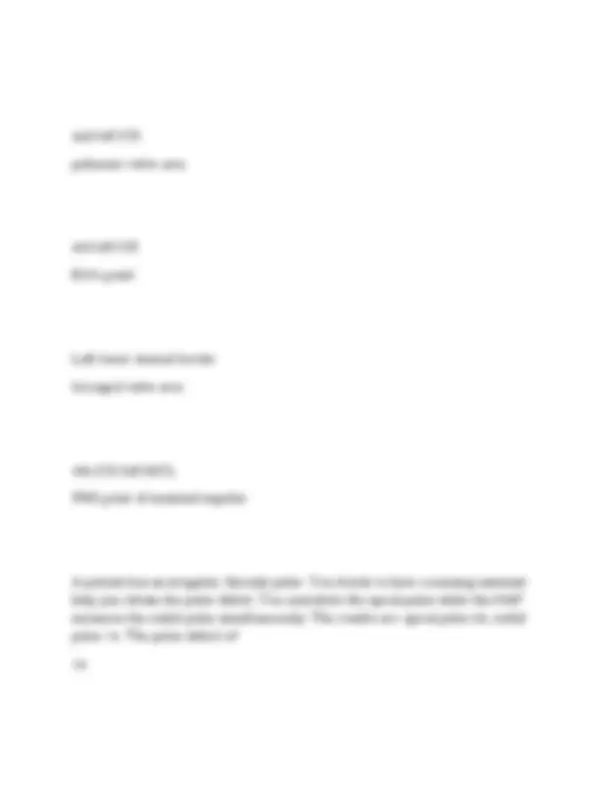
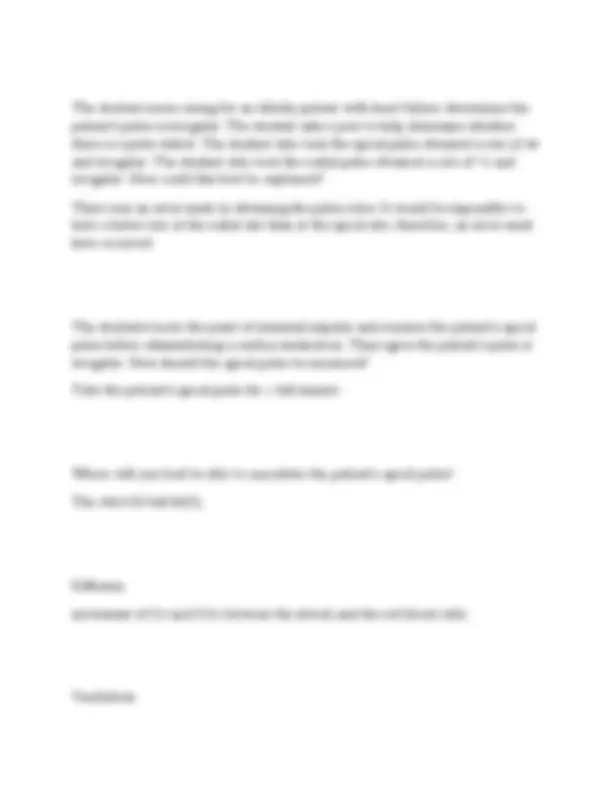
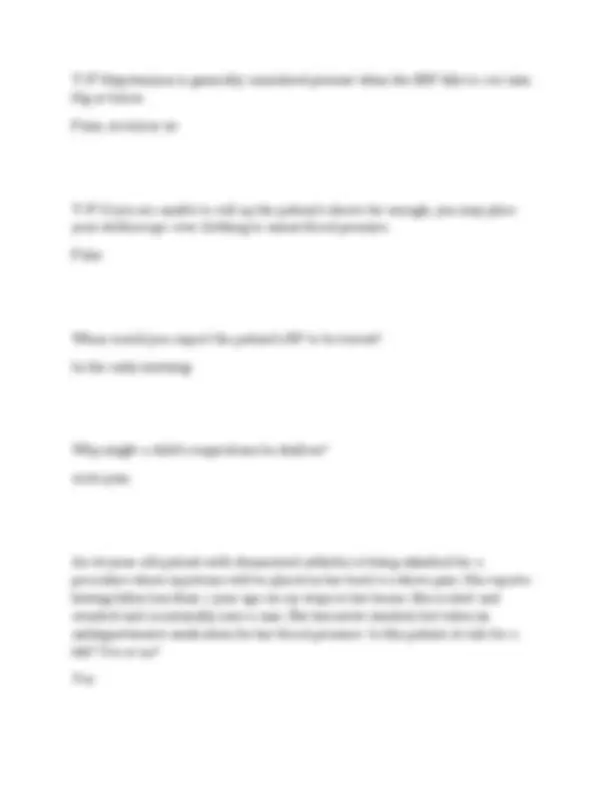
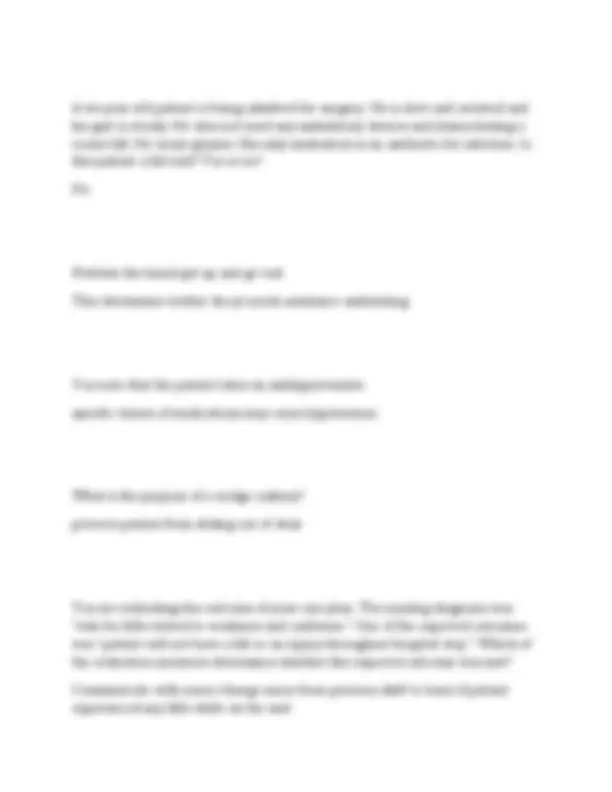
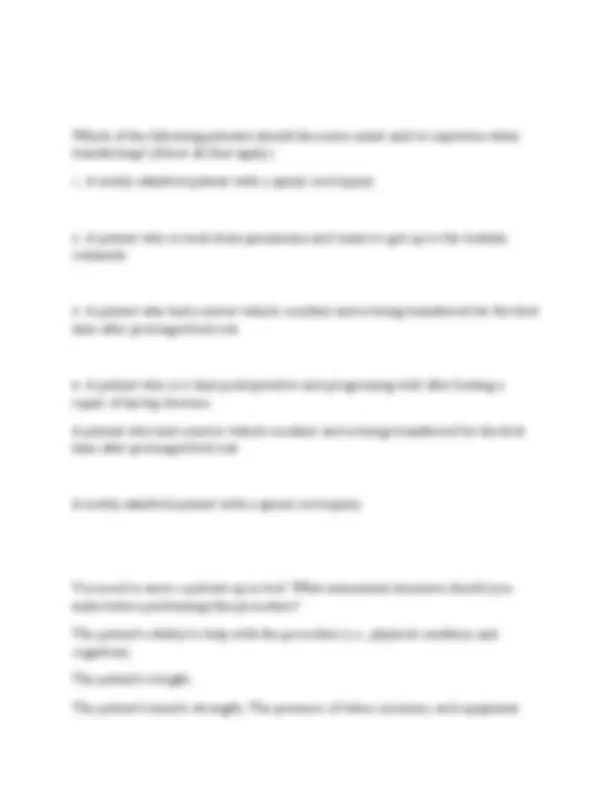
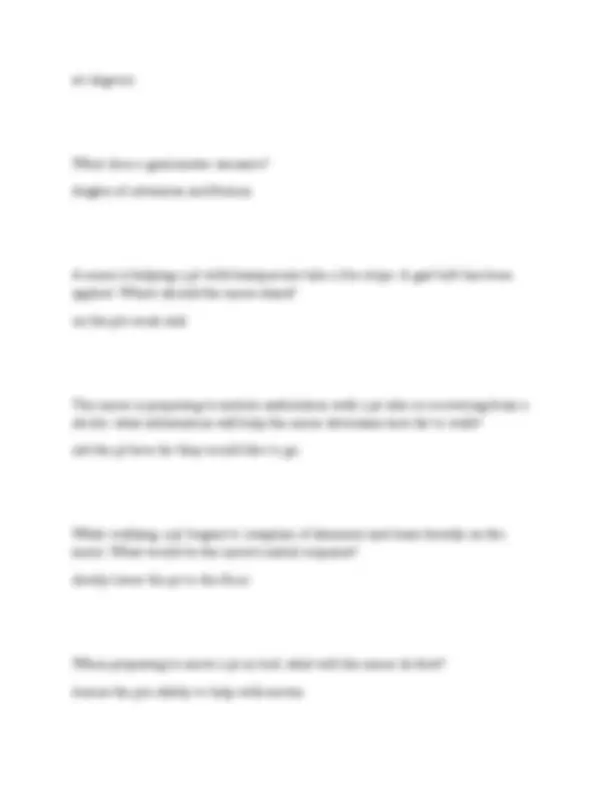
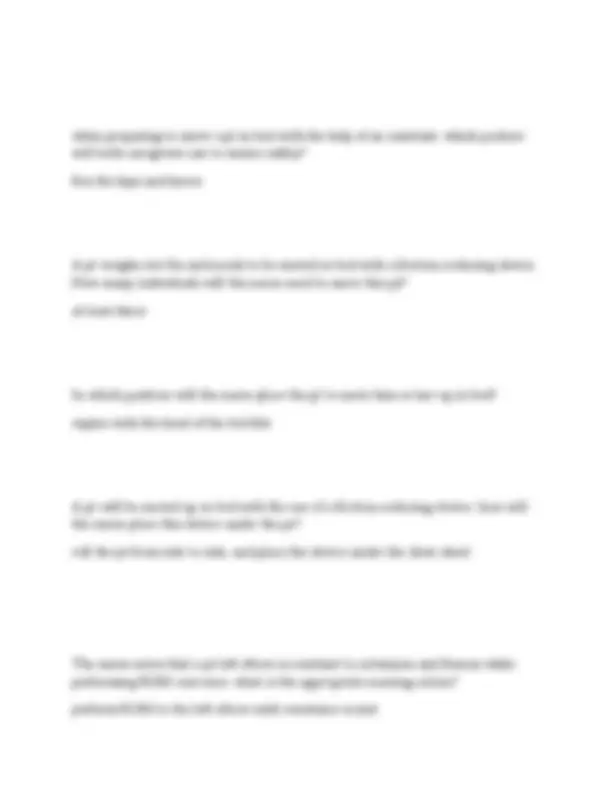
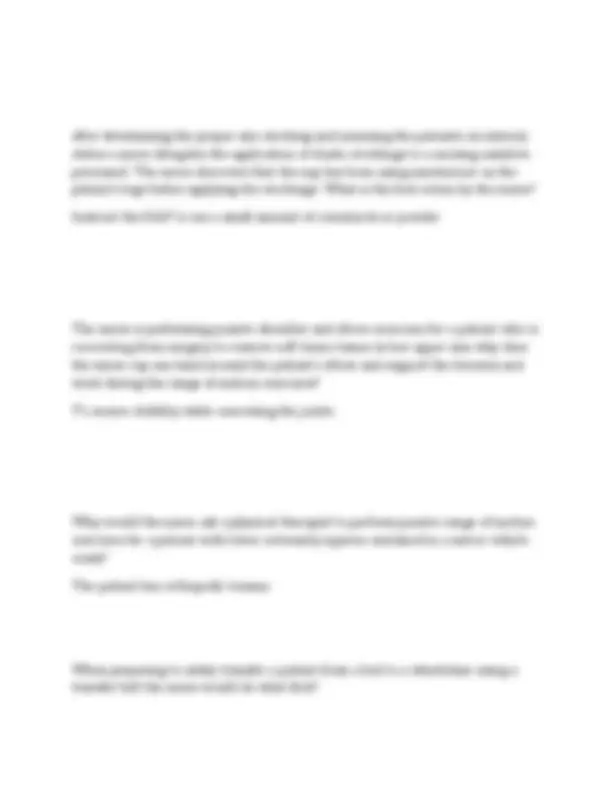
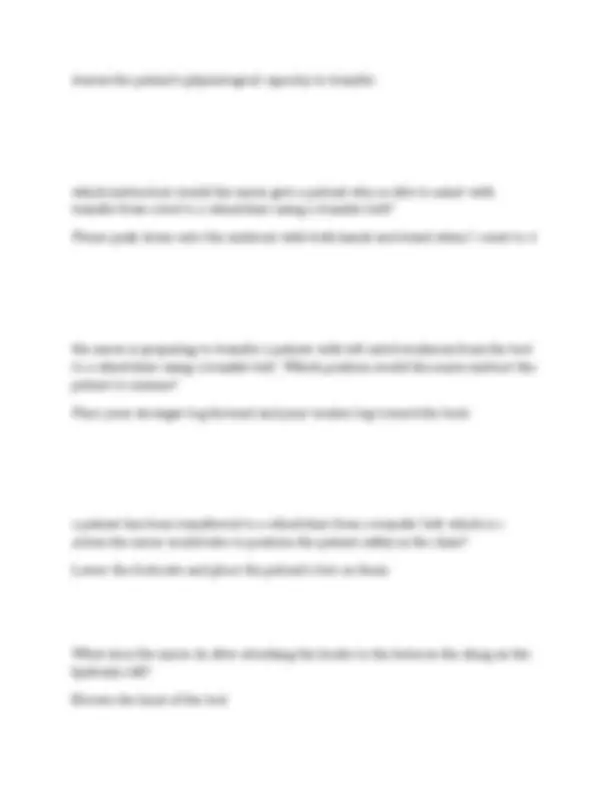
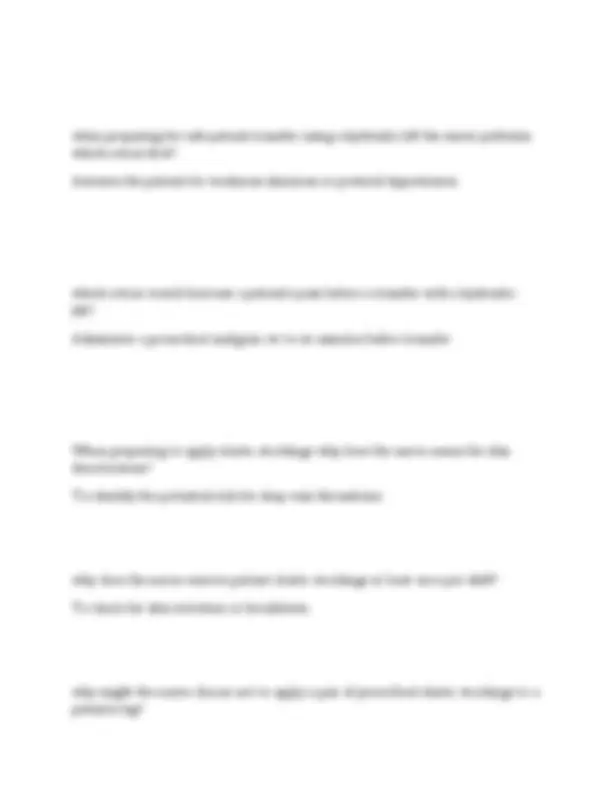
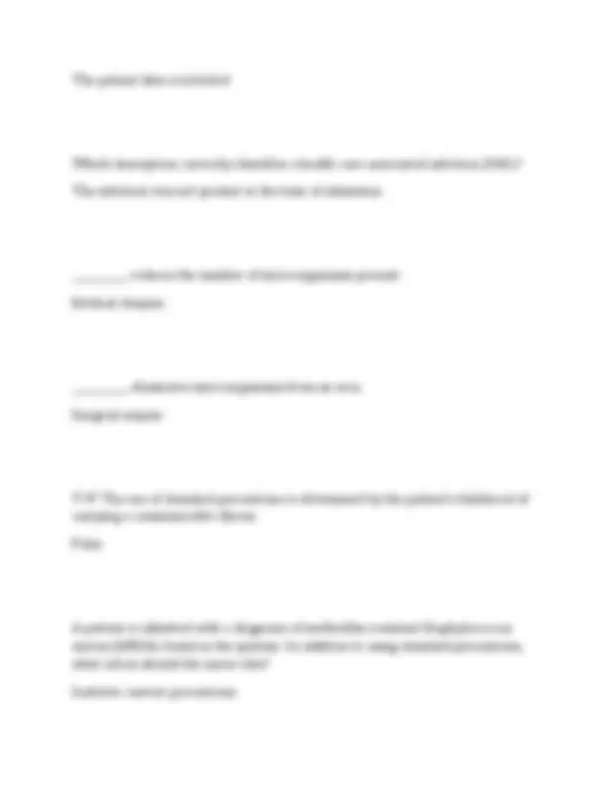
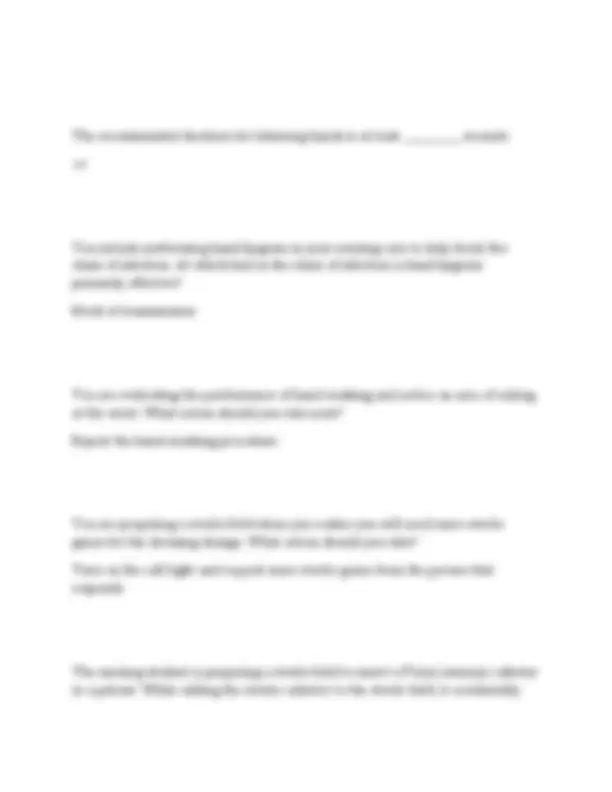
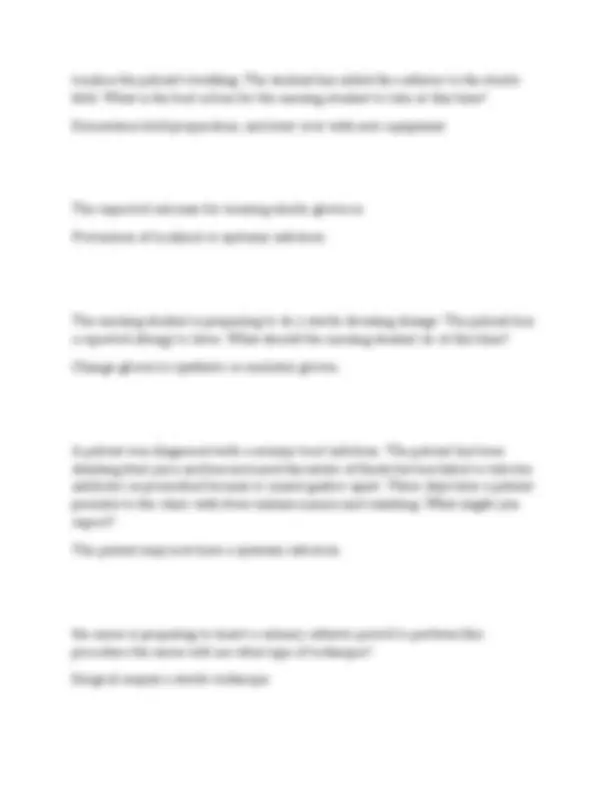
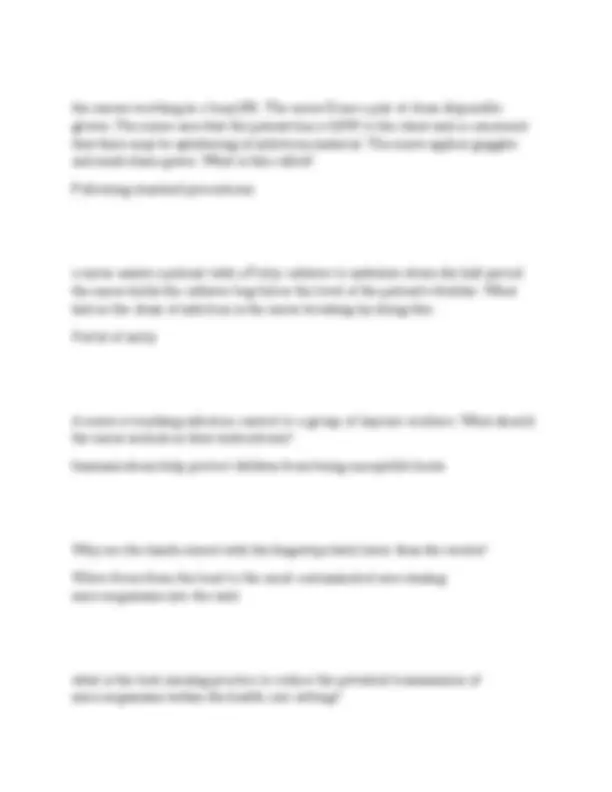
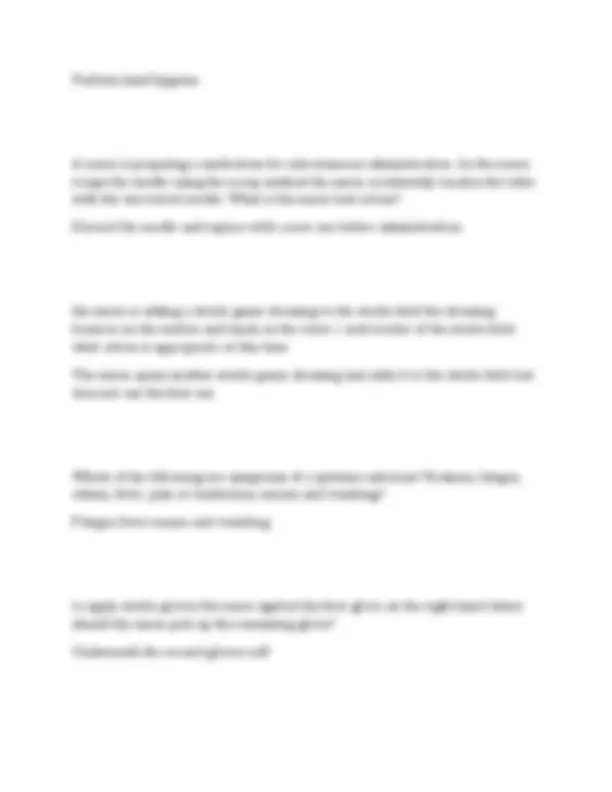
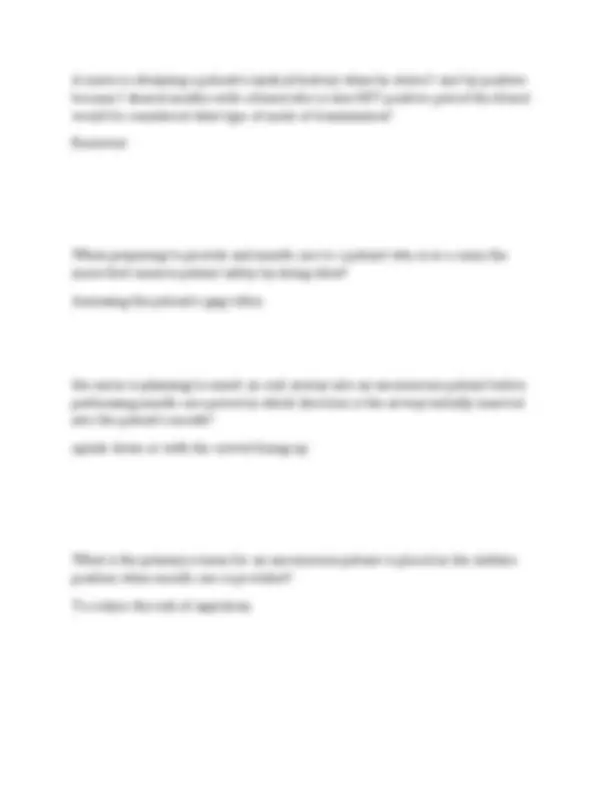
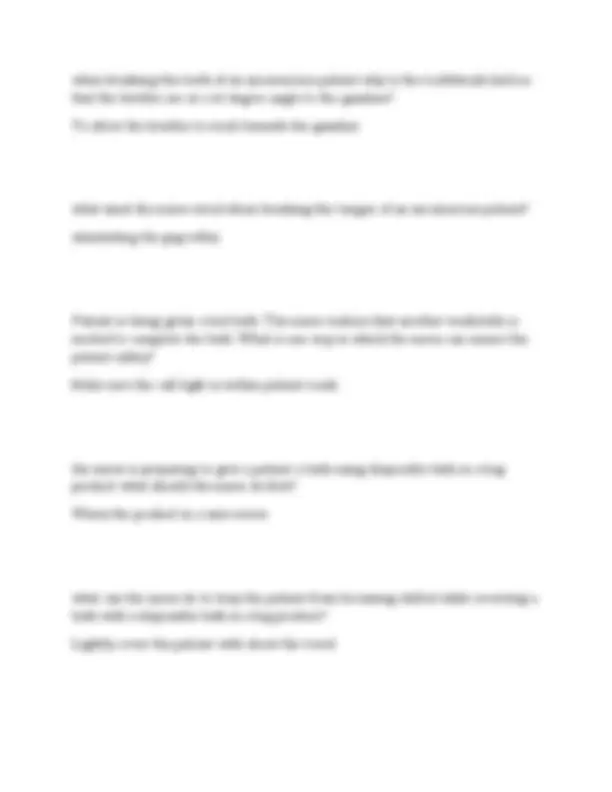
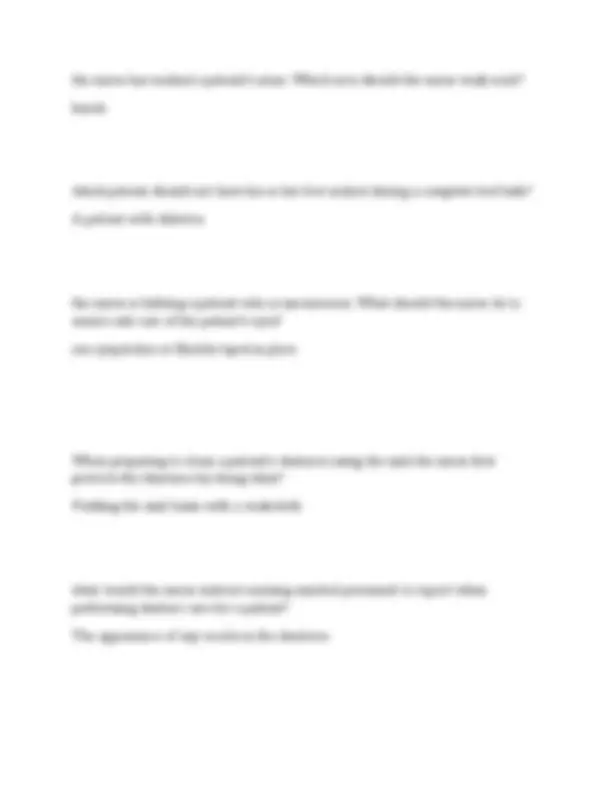
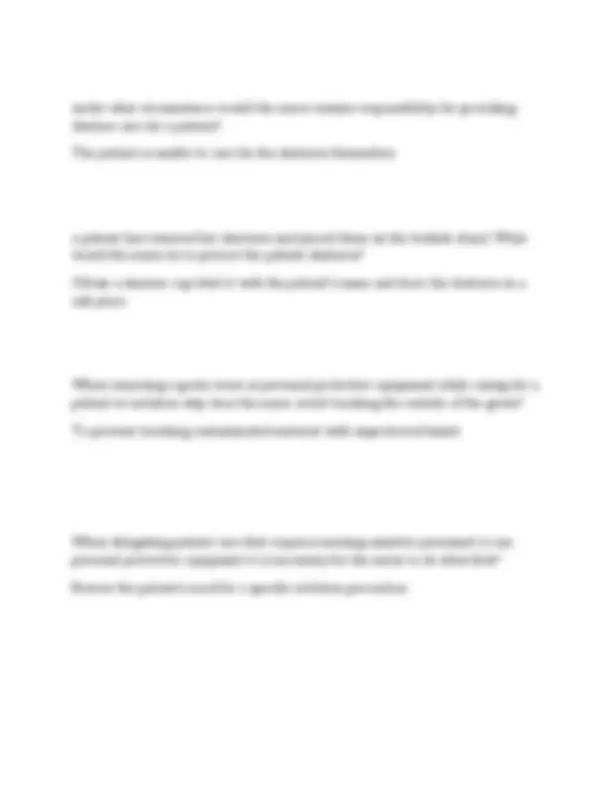
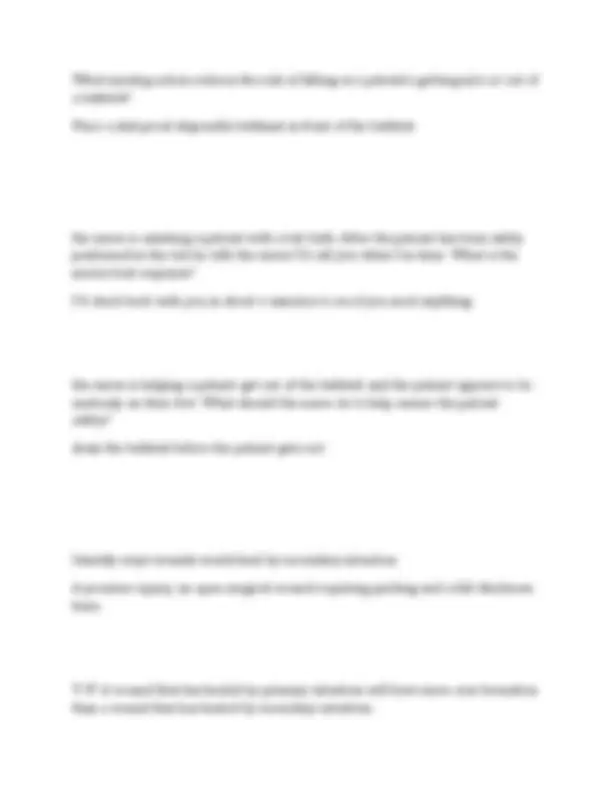
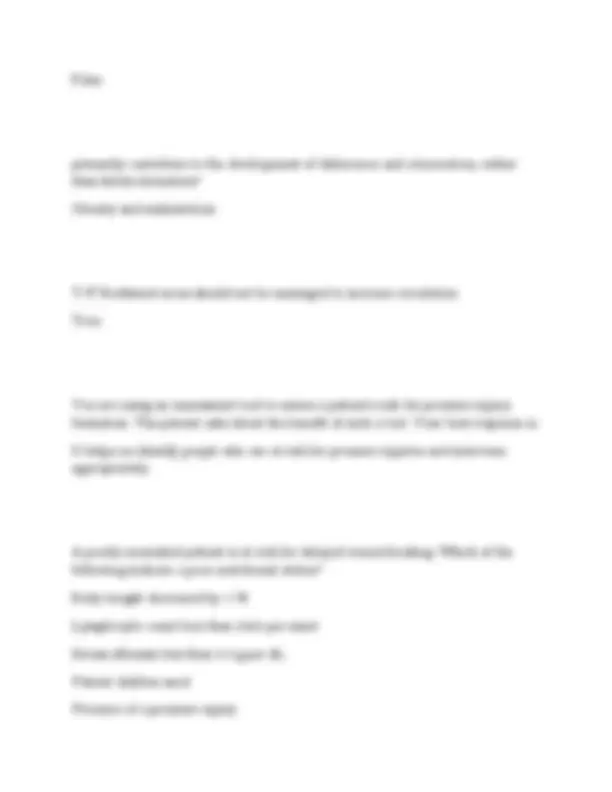

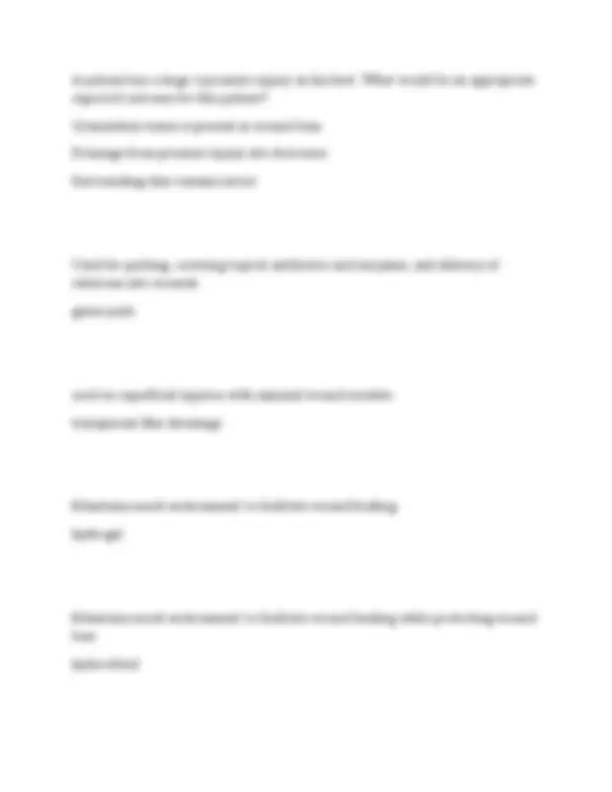
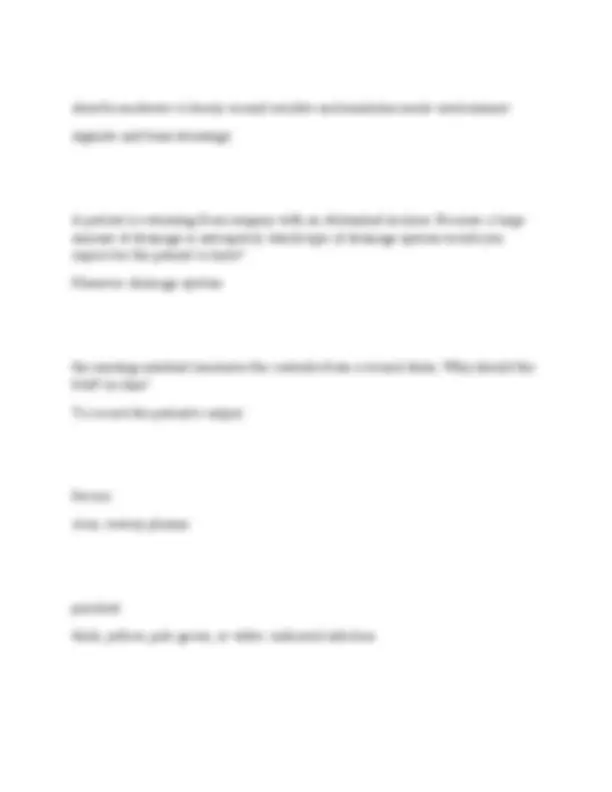
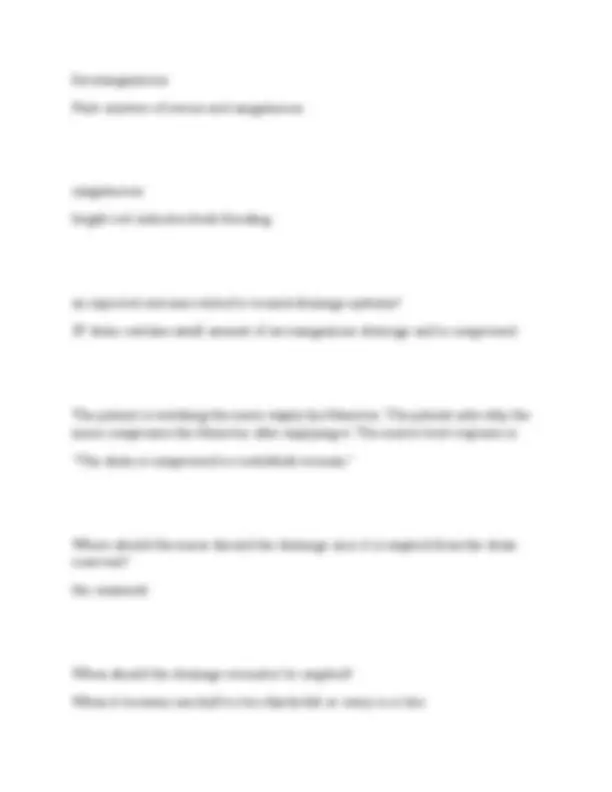
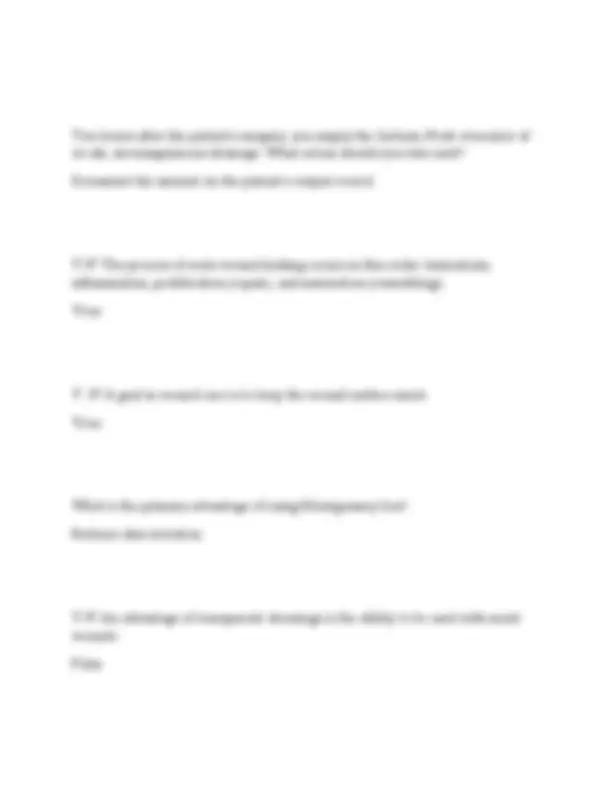
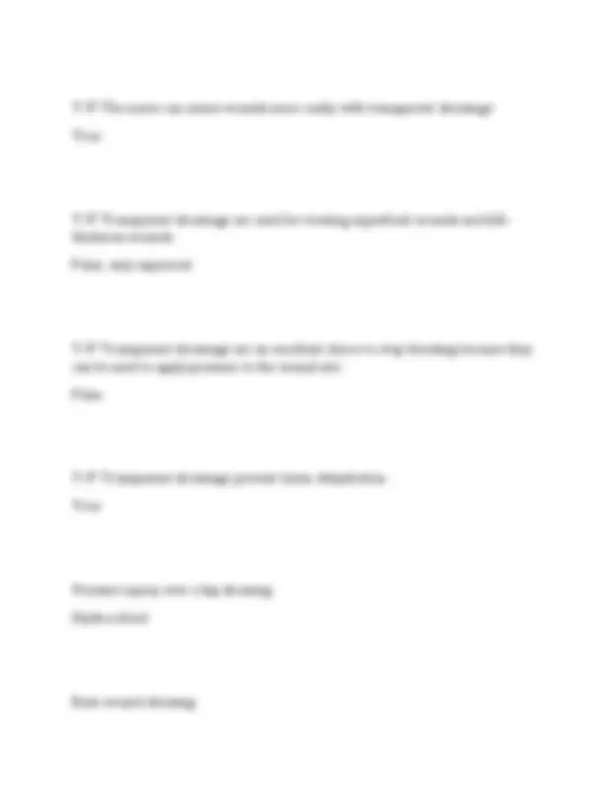
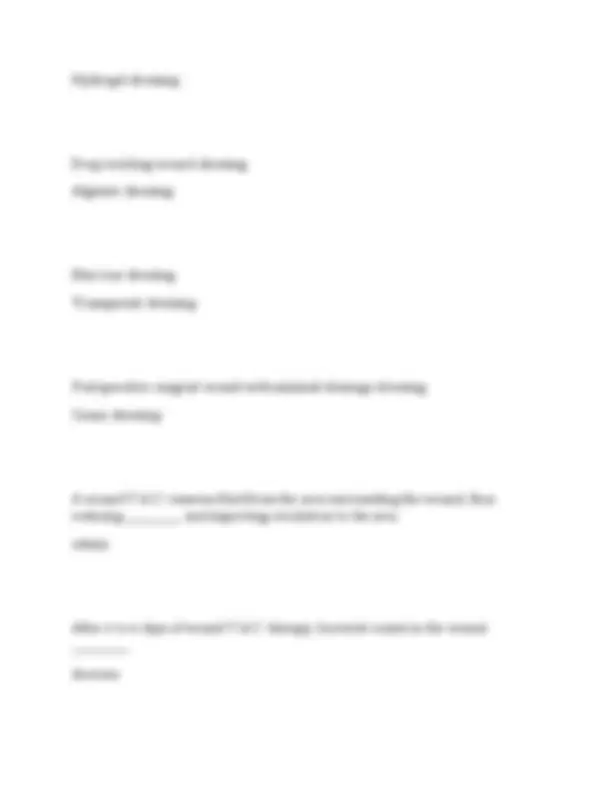
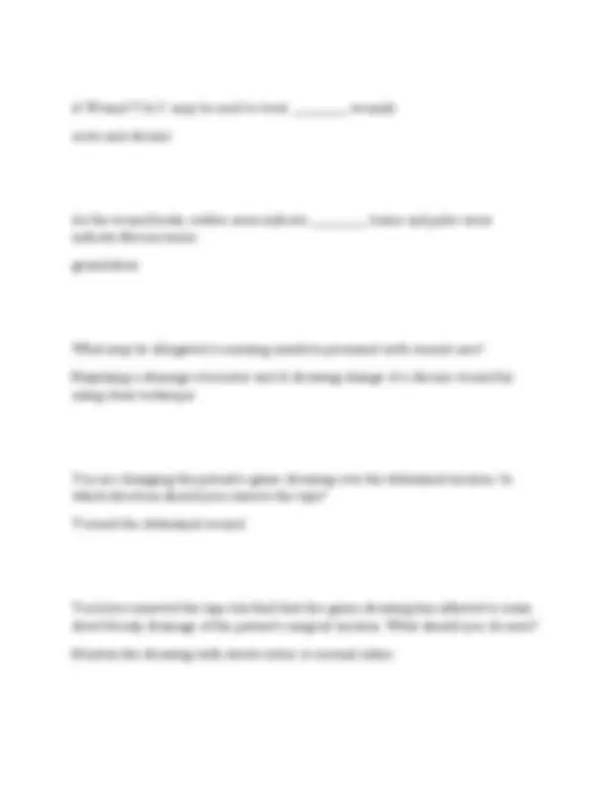
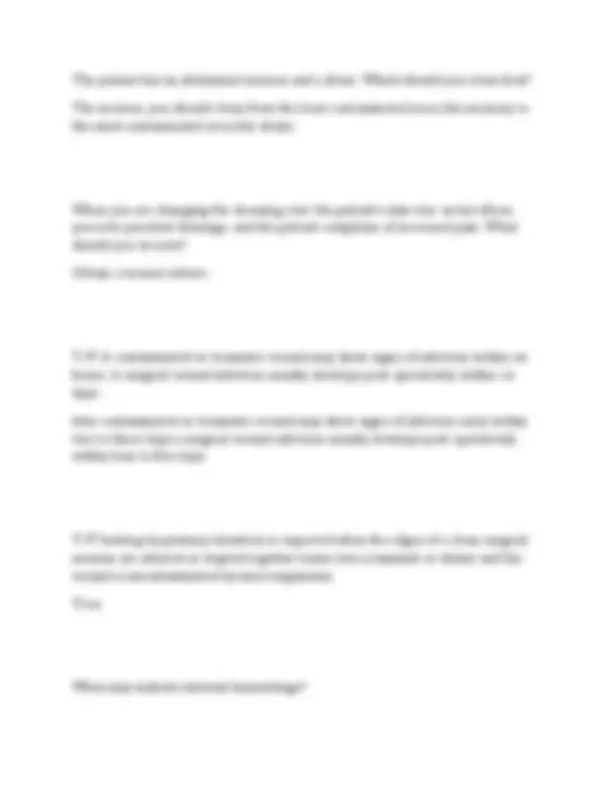
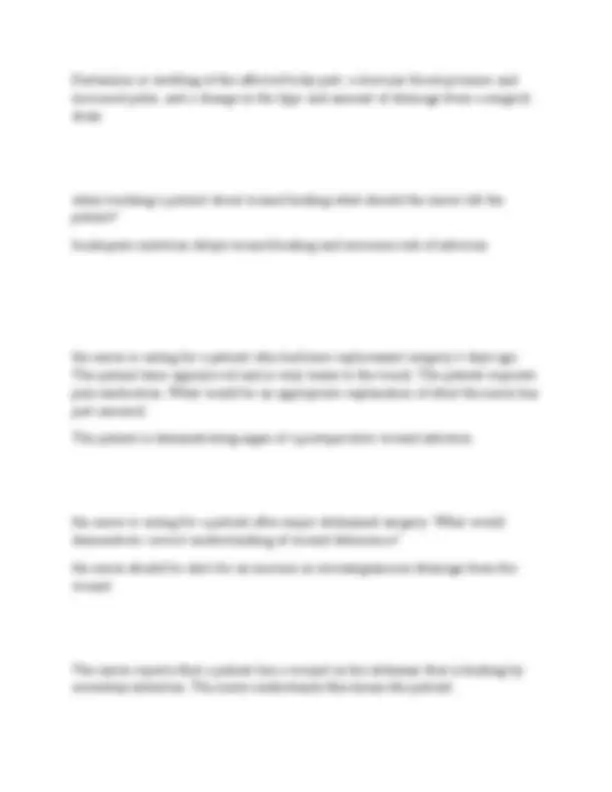
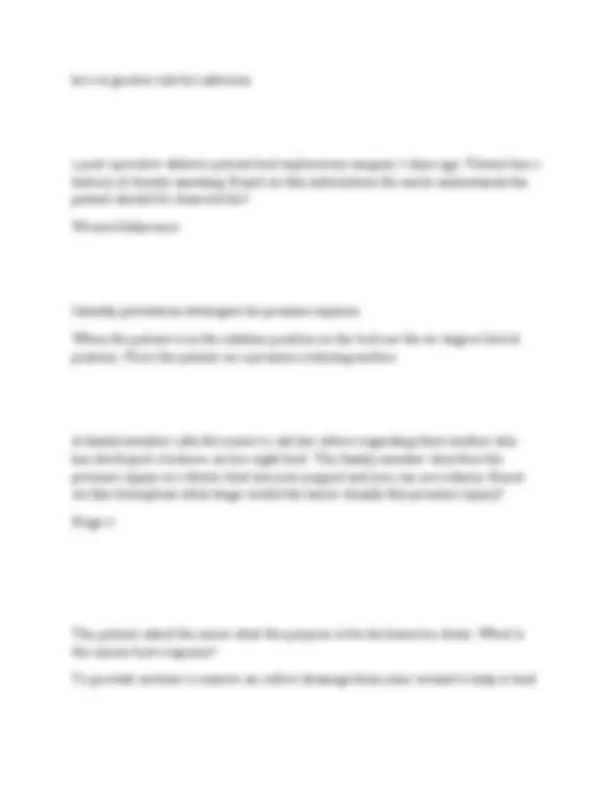
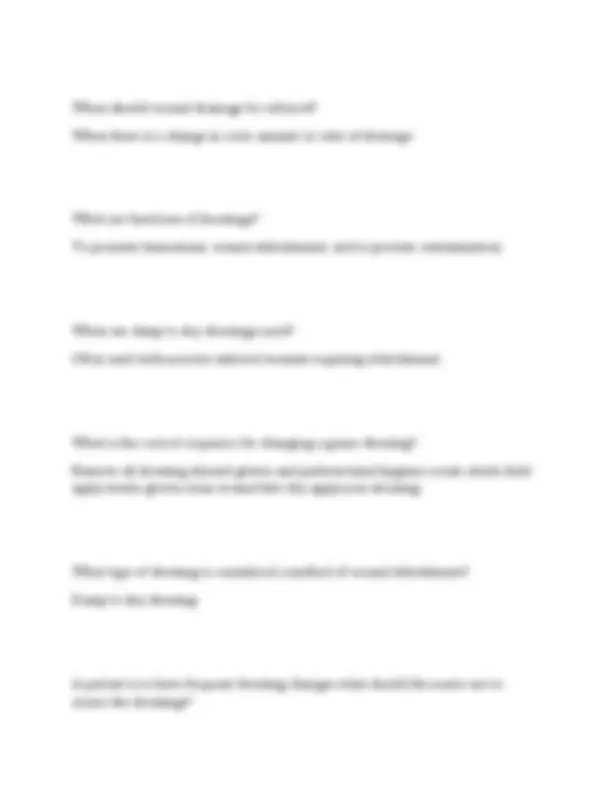
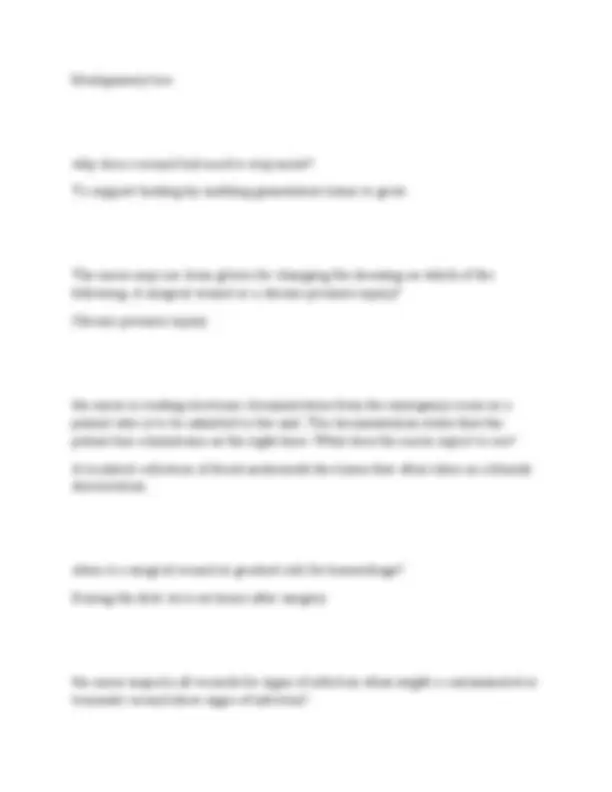
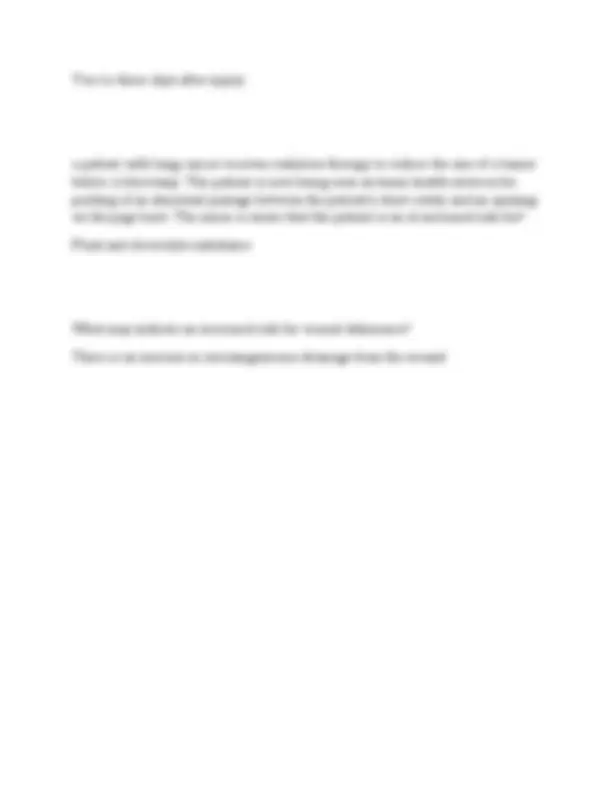


Study with the several resources on Docsity

Earn points by helping other students or get them with a premium plan


Prepare for your exams
Study with the several resources on Docsity

Earn points to download
Earn points by helping other students or get them with a premium plan
Community
Ask the community for help and clear up your study doubts
Discover the best universities in your country according to Docsity users
Free resources
Download our free guides on studying techniques, anxiety management strategies, and thesis advice from Docsity tutors
A comprehensive set of questions and answers related to patient assessment in nursing, focusing on vital signs, temperature measurement, pulse assessment, respiration, and blood pressure. It covers various clinical scenarios, appropriate nursing actions, and potential alterations in vital signs. The material is designed to enhance understanding and application of key concepts in patient care, making it a valuable resource for nursing students and professionals. It includes practical knowledge on using different types of thermometers, interpreting pulse readings, and identifying risk factors for falls. (410 characters)
Typology: Exams
1 / 47

This page cannot be seen from the preview
Don't miss anything!








































The NAP reports to the nurse the pts RR is 32 and the pt is complaining of SOB. What is the best action by the nurse at this time? Assess the pt, including the pulse oximetry reading. Which pt is at high risk for the pulse oximetry alarm to sound? A pt with a continuous pulse oximetry reading of 84% The nurse is ambulating the patient for the first time following the patient's lengthy time of being on bed rest. Which of the following would be an appropriate action by the nurse to determine the patient's activity tolerance? Assess vital signs before and after ambulating the patient. You take a patient's vital signs on admission to the hospital. Why is it important to take vital signs at this time? To obtain a baseline measurement for comparison with subsequent vital sign measurements You are preparing to take a patient's temperature. Which of the following factors may affect the patient's oral temperature reading?
If the patient has recently consumed a hot or cold beverage, If the patient has recently exercised, Warmth of the room, If the patient has recently smoked The NAP reports to you that a patient is "feeling different" and appears less alert. Your first action should be to: Obtain the vital signs yourself. Which of the following patients is exhibiting abnormal vital sign values for their age?
Tympanic thermometer Sensor thermometer cover not required Temporal artery thermometer Often underestimates temperature Chemical thermometer Risk of transferring nosocomial Clostridium infections rectally; also expensive thermometer Electronic thermometer Otitis media and cerumen can lead to false readings with this thermometer Tympanic thermometer Affected by skin moisture such as diaphoresis or sweating Temporal artery thermometer
What is likely to result in a higher temperature reading? The temperature of a teenager who just ran a mile. The temperature of a college student taking an exam A temperature taken in the evening Which of the following patients may require more frequent temperature measurement and nursing assessment because they are at risk for an alteration in temperature? (Select all that apply.)
Because older adults often maintain a ________ body temperature, a temperature within an acceptable range in an adult may reflect a fever in an older adult. lower A young adult has been admitted to the hospital with a fever of unknown origin. Intravenous (IV) fluids have been started, and the patient is feeling much better. You are going to take the patient's temperature. Which of the following would be the best thermometer selection? An electronic thermometer with a blue probe end The patient's temperature is 102.2 ºF (39 ºC). What action should you take? Administer an antipyretic as ordered. Before taking the patient's temperature, the patient tells you they just drank some ice water. What is your best action? Request that the patient refrain from eating or drinking until you return in 20 minutes to assess their oral temperature The skill of radial pulse measurement can or can not be delegated to NAP. can
If the patient is to receive a medication that requires an apical pulse before administration, it should or should not be delegated to NAP. should not NAP should be instructed to report any abnormalities that should be ________ by the nurse. confirmed You enter the patient's room to take routine vital signs. You see that the patient has just finished exercising with physical therapy. What is your best action? Wait 5 to 10 minutes before assessing the pulse. When measuring an irregular radial pulse, you must: Consider reassessing the patient using the apical site. Count the rate over 60 seconds/1 full minute. 2nd right ICS aortic valve area
The student nurse caring for an elderly patient with heart failure determines the patient's pulse is irregular. The student asks a peer to help determine whether there is a pulse deficit. The student who took the apical pulse obtained a rate of 56 and irregular. The student who took the radial pulse obtained a rate of 72 and irregular. How could this best be explained? There was an error made in obtaining the pulse rates. It would be impossible to have a faster rate at the radial site than at the apical site; therefore, an error must have occurred. The students locate the point of maximal impulse and reassess the patient's apical pulse before administering a cardiac medication. They agree the patient's pulse is irregular. How should the apical pulse be measured? Take the patient's apical pulse for 1 full minute. Where will you best be able to auscultate the patient's apical pulse? The 5th ICS/left MCL Diffusion movement of O2 and CO2 between the alveoli and the red blood cells. Ventilation
mechanical movement of gases into and out of the lungs. Perfusion distribution of red blood cells to and from the pulmonary capillaries. Hemoglobin (males) 14 - 18 g/dL pH 7.35-7. Hemoglobin (females) 12 - 16 g/dL PaCO 35 - 45 mmHg
T/F Hypotension is generally considered present when the SBP falls to 100 mm Hg or below. False, its below 90 T/F If you are unable to roll up the patient's sleeve far enough, you may place your stethoscope over clothing to assess blood pressure. False When would you expect the patient's BP to be lowest? In the early morning Why might a child's respirations be shallow? acute pain An 80-year-old patient with rheumatoid arthritis is being admitted for a procedure where injections will be placed in her back to relieve pain. She reports having fallen less than 1 year ago on icy steps to her house. She is alert and oriented and occasionally uses a cane. She has never smoked, but takes an antihypertensive medication for her blood pressure. Is this patient at risk for a fall? Yes or no? Yes
A 48-year-old patient is being admitted for surgery. He is alert and oriented and his gait is steady. He does not need any ambulatory devices and denies having a recent fall. He wears glasses. His only medication is an antibiotic for infection. Is this patient a fall risk? Yes or no? No Preform the timed get up and go test. This determines wether the pt needs assistance ambulating You note that the patient takes an antihypertensive. specific classes of medications may cause hypotension. What is the purpose of a wedge cushion? protects patient from sliding out of chair You are evaluating the outcome of your care plan. The nursing diagnosis was "risk for falls related to weakness and confusion." One of the expected outcomes was "patient will not have a fall or an injury throughout hospital stay." Which of the evaluation measures determines whether this expected outcome was met? Communicate with nurse/charge nurse from previous shift to learn if patient experienced any falls while on the unit.
the nurse is caring for a patient with a nursing diagnosis of "Activity intolerance related to prolonged bed rest." What should the nurse assess prior to getting the patient out of bed? Blood pressure Pulse and respiratory rate Patient's ability to follow instructions T/F When preparing equipment for a patient transfer from bed to chair, position a wheelchair or supportive chair at a 45-degree angle close to bed. True You are caring for a patient with a nursing diagnosis of "Activity intolerance related to orthostatic hypotension." You raise the head of the patient's bed to a high-Fowler's position and reassess the patient's blood pressure, which remains within acceptable limits. You then have the patient sit on the side of the bed, and upon doing so, the patient complains of feeling nauseous and dizzy. What action should you take at this time? Help the patient back into bed and lower the head of the bed. Allow the patient to rest and try again more gradually later. The nursing students have started their clinical day. According to the patient's record, the patient weighs 260 pounds and is weak. The staff nurse tells the
student nurse that the patient needs to be moved up in bed so he can eat breakfast. What should the student nurse do at this time? Get additional assistance to move the patient up in bed. The nurse is delegating the feeding of dependent patients. Under which circumstance should the nurse attend to the patient, rather than the NAP? A 76-year-old who was just admitted to the unit after having a CVA (stroke). The nurse is getting a pt with right-sided weakness up in a chair. On what side of the bed should the nurse place the chair? On the pts left sideap Assessment used to test muscle strength? applying an opposing force or resistance What is an increased thoracic curvature, common in older adults? Kyphosis Neck flexion and extension should be?
when preparing to move a pt in bed with the help of an assistant, which posture will both caregivers use to ensure safety? flex the hips and knees A pt weighs 200 lbs and needs to be moved in bed with a friction-reducing device. How many individuals will the nurse need to move this pt? at least three In which position will the nurse place the pt to move him or her up in bed? supine with the head of the bed flat A pt will be moved up in bed with the use of a friction-reducing device. how will the nurse place this device under the pt? roll the pt from side to side, and place the device under the draw sheet The nurse notes that a pt left elbow is resistant to extension and flexion while performing ROM exercises. what is the appropriate nursing action? perform ROM to the left elbow until resistance is met
after determining the proper size stocking and assessing the patients circulatory status a nurse delegates the application of elastic stockings to a nursing assistive personnel. The nurse discovers that the nap has been using moisturizer on the patient's legs before applying the stockings. What is the best action by the nurse? Instruct the NAP to use a small amount of cornstarch or powder The nurse is performing passive shoulder and elbow exercises for a patient who is recovering from surgery to remove soft tissue tumor in her upper arm why does the nurse cup one hand around the patient's elbow and support the forearm and wrist during the range of motion exercises? To ensure stability while exercising the joints Why would the nurse ask a physical therapist to perform passive range of motion exercises for a patient with lower extremity injuries sustained in a motor vehicle crash? The patient has orthopedic trauma When preparing to safely transfer a patient from a bed to a wheelchair using a transfer belt the nurse would do what first?